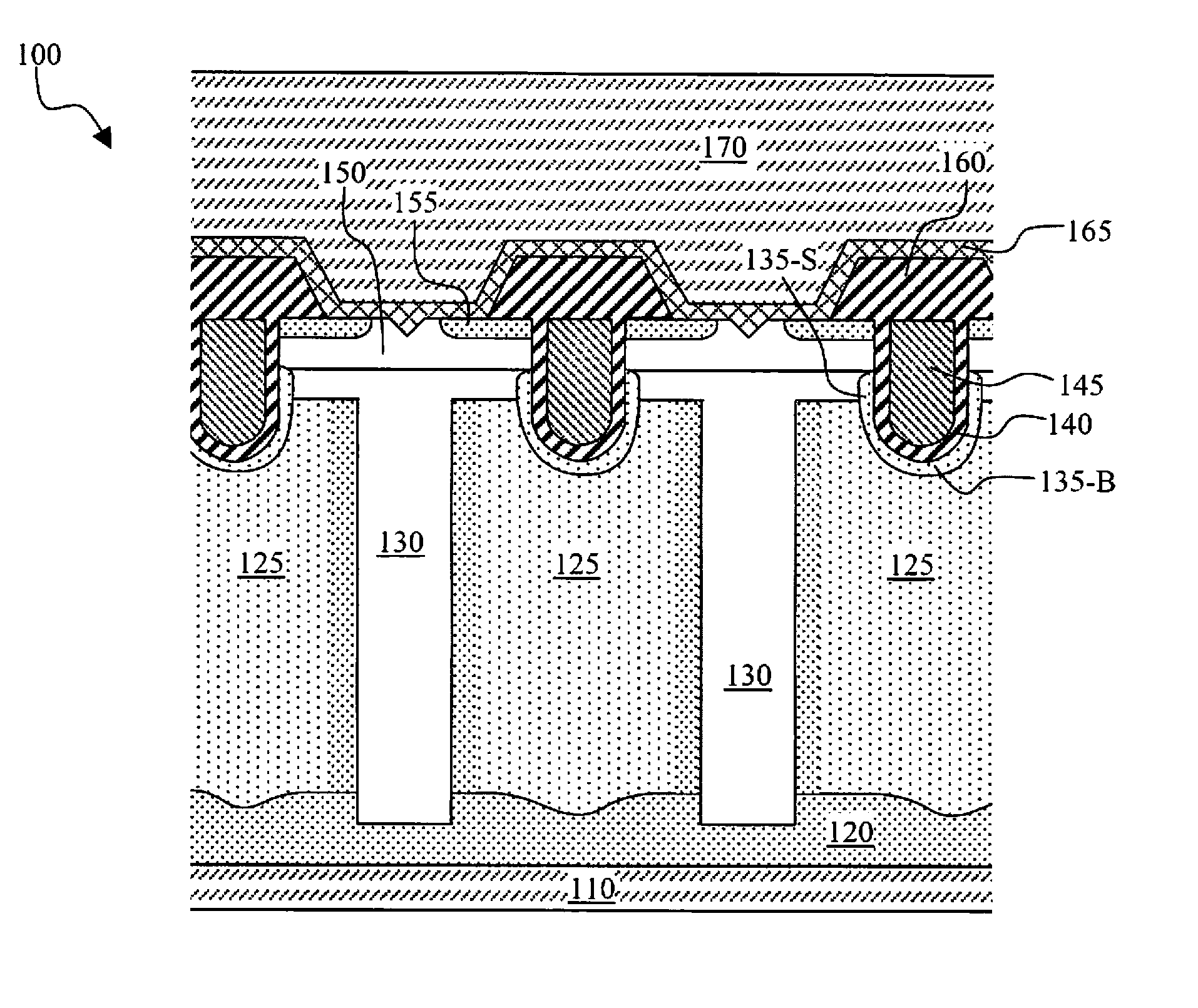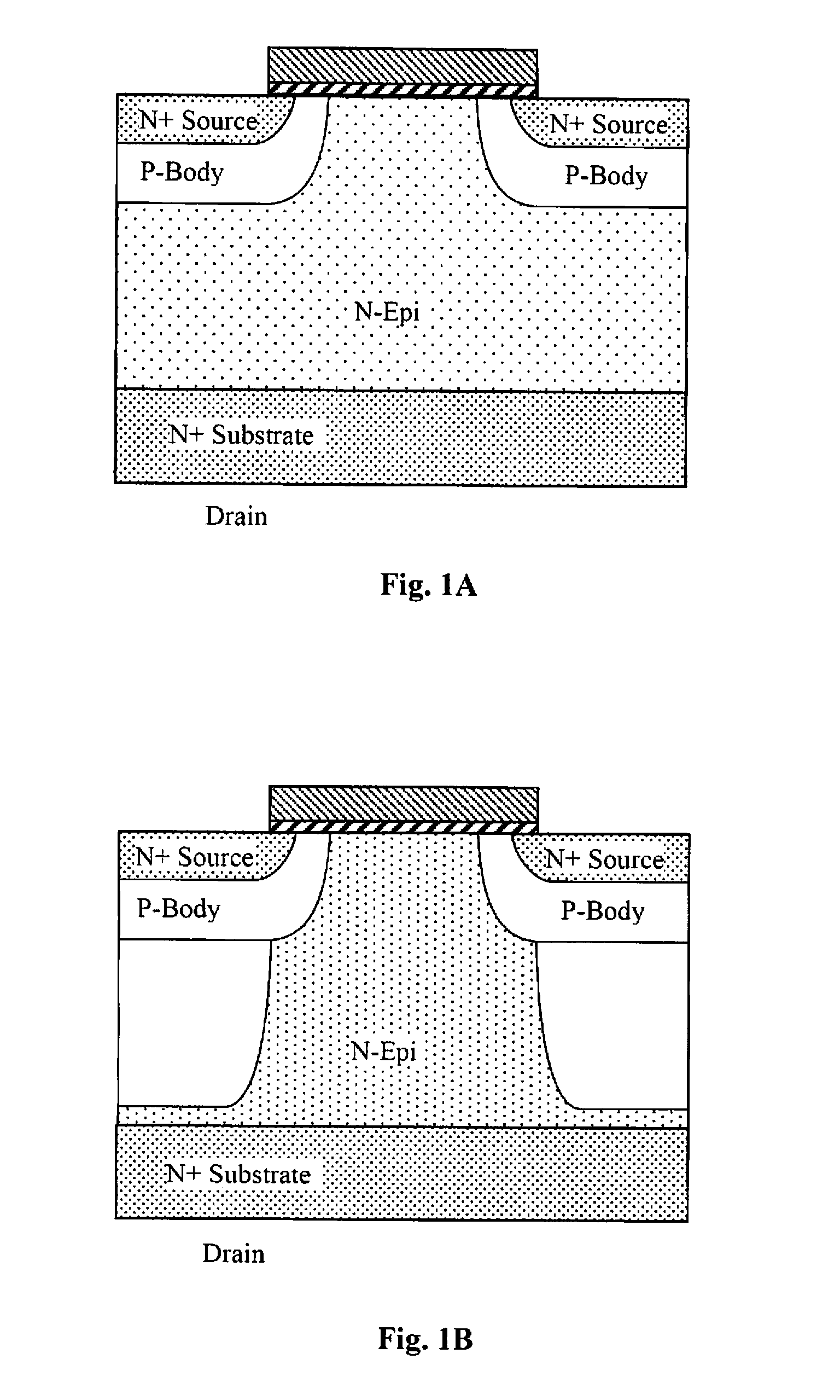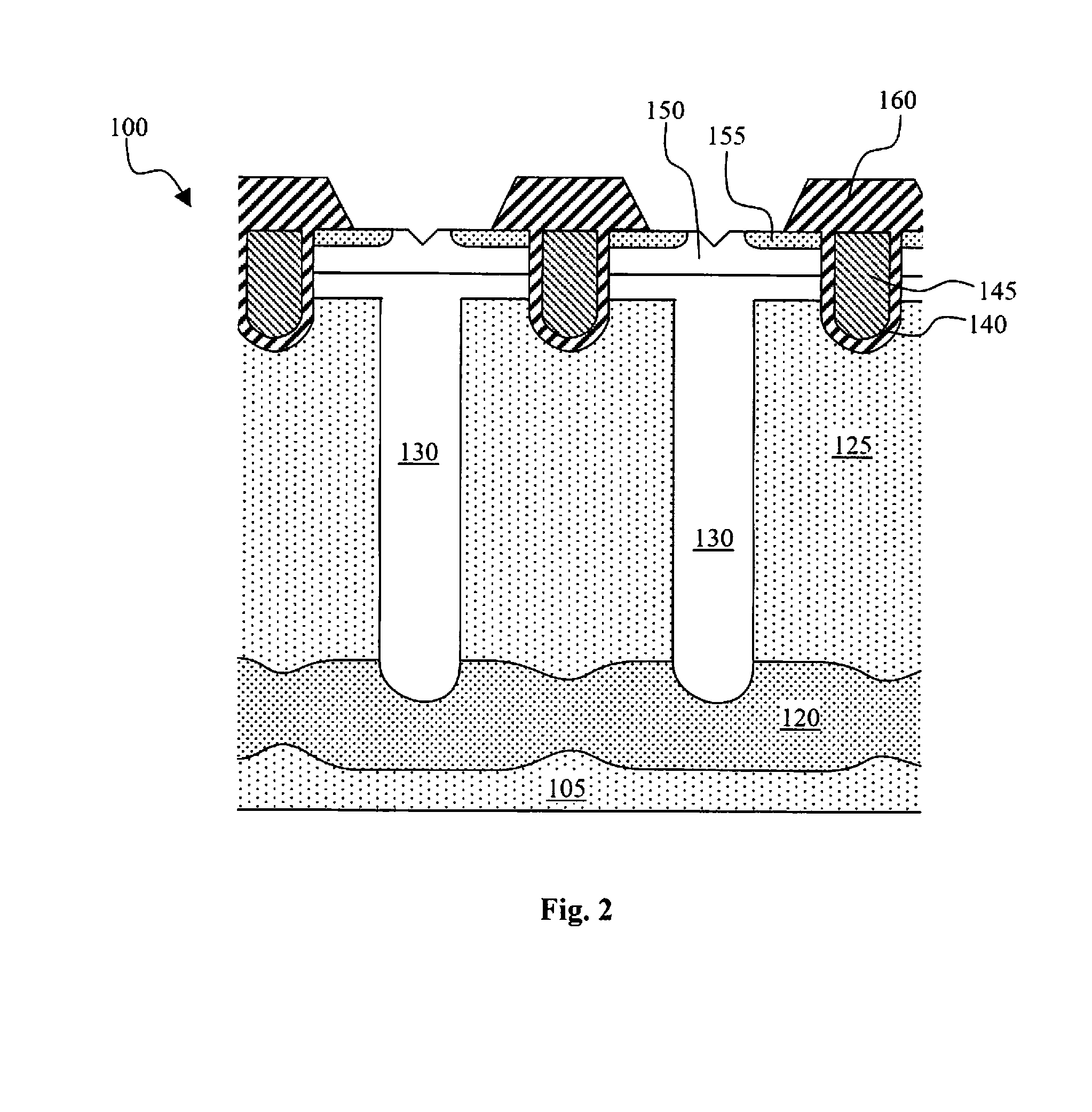Configurations and methods for manufacturing charged balanced devices
a technology of balanced devices and configurations, applied in the field of configurations and methods for manufacturing charged balanced devices, can solve the problems of limited practical applications and usefulness of high-voltage semiconductor power devices, low throughput and yield, and the difficulty of conventional manufacturing technologies and device configurations to further increase the breakdown voltage with reduced series resistance, etc., to achieve simplified manufacturing processes, reduce processing steps, and reduce the effect of processing steps
- Summary
- Abstract
- Description
- Claims
- Application Information
AI Technical Summary
Benefits of technology
Problems solved by technology
Method used
Image
Examples
Embodiment Construction
[0028]Referring to FIG. 2 for a cross sectional view of a MOSFET device 100 that illustrates the new concepts including the new structural and manufacturing features of this invention. The details of the MOSFET device 100 will be further described and explained in FIG. 3. The MOSFET device 100 is supported on an N type substrate 105 that includes a N+ doped bottom region 120 functioning as drain contact region doped through deep trenches 130 (after back grinding, as shown in FIG. 3 below) that is filled with a P-epitaxial layer therein. The MOSFET transistor cells are supported on the single thin P-epitaxial layer filling in epitaxial column trenches 130 and covering over the top surface surrounding the P-epitaxial columns that has the P-epitaxial filling in the column trenches. The thin P-epitaxial region at the top is formed with the body regions 150 surrounding the trench gate 145 filled with gate polysilicon therein. The P-body regions 150 further encompass the source regions 15...
PUM
| Property | Measurement | Unit |
|---|---|---|
| conductivity | aaaaa | aaaaa |
| charge | aaaaa | aaaaa |
| thickness | aaaaa | aaaaa |
Abstract
Description
Claims
Application Information
 Login to View More
Login to View More - R&D
- Intellectual Property
- Life Sciences
- Materials
- Tech Scout
- Unparalleled Data Quality
- Higher Quality Content
- 60% Fewer Hallucinations
Browse by: Latest US Patents, China's latest patents, Technical Efficacy Thesaurus, Application Domain, Technology Topic, Popular Technical Reports.
© 2025 PatSnap. All rights reserved.Legal|Privacy policy|Modern Slavery Act Transparency Statement|Sitemap|About US| Contact US: help@patsnap.com



